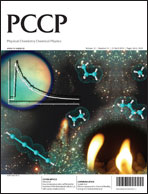Current–voltage (I–V) curves have been measured, independent of the main discharge, for electricity passing through the steady state fast flowing ‘afterglow’ plasma of a low power dc glow discharge in Ar. Voltage profiles along the axial line of conduction have been mapped using fixed probes and potentiometry, and the mass spectra of cations emerging from the downstream sampling Cone, also acting as a probe anode, were recorded simultaneously. Floating double probe experiments were also carried out. The electrical behavior is consistent with the well established I–V characteristics of such discharges, but does not comply with classical plasma theory predictions. The plasma decays along the line of conduction, with a lifetime of ∼1 ms, despite carrying a steady state current, and its potential is below that of the large surface area anode voltage; a situation which cannot exist in the presence of a conventional free ion–electron plasma, unless the electron temperature is super cold. Currents, large by comparison with the main discharge current, and independent of it, are induced to flow through the downstream plasma, from the Anode (acting as a cathode) to the anodic ion exit Cone, induced by electron impact ionisation at the anode, but without necessarily increasing the plasma density. It appears to be conducted by direct charge transfer between a part of the anode surface (acting as cathode to the auxiliary circuit) and the plasma, without secondary electron emission or heating, which suggests the direct involvement of Rydberg atom intermediates. The reaction energy defect (= the work function of the electrode surface) fits with the plasma potential threshold observed for the cathodic reaction to occur. A true free ion–electron plasma is readily detected by the observation of cations at the anode surface, when induced at the downstream anode, at high bias voltages, by the electron impact ionisation in the boundary region. In contrast to the classical model, the complex electrical (and mass spectrometric) behaviour fits qualitatively, but can be understood well, with the Rydberg gas model described in papers II and III (R. S. Mason, and R. S. Mason and P. Douglas, PCCP, 2010, DOI: 10.1039/b918081h and b918083d) over a wide range of probe bias voltages. The full cycle of behavior is then described for the development of a true secondary discharge within the downstream plasma.


 Please wait while we load your content...
Please wait while we load your content...